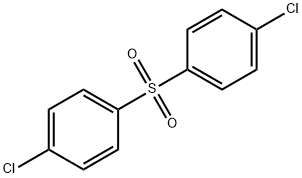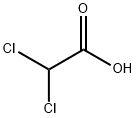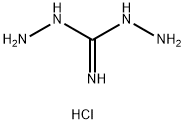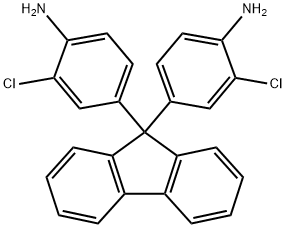4,4'-Methylene bis(2-chloroaniline)
Synonym(s):2,2′-Dichloro-4,4′-methylenedianiline;4,4′-Diamino-3,3′-dichlorodiphenylmethane
- CAS NO.:101-14-4
- Empirical Formula: C13H12Cl2N2
- Molecular Weight: 267.15
- MDL number: MFCD00047829
- EINECS: 202-918-9
- SAFETY DATA SHEET (SDS)
- Update Date: 2024-12-18 14:07:02

What is 4,4'-Methylene bis(2-chloroaniline)?
Chemical properties
off-white powder
The Uses of 4,4'-Methylene bis(2-chloroaniline)
MOCA is widely used in machinery, automobile, aircraft manufacturing, mining, industrial and sports facilities (such as plastic track and plastic floor) can be used for curing and waterproof coatings such as epoxy resin, which can be given to polyester and polyether elastomer most good physical and mechanical properties and the results.
The Uses of 4,4'-Methylene bis(2-chloroaniline)
Curing agent for polyurethanes and epoxy resins
What are the applications of Application
4,4′-Methylene-bis(2-chloroaniline) is an analytical standard for aromatic amine determination
Definition
ChEBI: A chloroaniline that consists of two 2-chloroaniline units joined by a methylene bridge.
Production Methods
The production of MOCA in the United States has ceased since 1979 and is now imported, mainly from Japan. More than 1.9 million lb was imported in 1989. The compound is currently used as a curing agent for isocyanate-containing polymers and in the manufacture of polyurethane foams, epoxy resins, gun mounts, jet engine turbine blades, radar systems, and components in home appliances. It is also a model compound for studying carcinogenesis.
General Description
Tan-colored pellets or an off-white solid. Slight odor.
Air & Water Reactions
Insoluble in water.
Reactivity Profile
4,4'-Methylene bis(2-chloroaniline) is a weak base. Undergoes an exothermic and self-sustaining decomposition reaction when exposed to heat above 392°F, In a closed container, the pressure buildup can be rapid enough to cause an explosion.
Hazard
Toxic. A confirmed carcinogen, absorbedby skin. Causes bladder cancer and methe-moglobinemia.
Health Hazard
4,4¢-Methylene bis(2-chloroaniline), or MOCA, is carcinogenic in experimental animals.
Fire Hazard
Flash point data for 4,4'-Methylene bis(2-chloroaniline) are not available. 4,4'-Methylene bis(2-chloroaniline) is probably combustible.
Flammability and Explosibility
Non flammable
Safety Profile
Confirmed carcinogen with experimental carcinogenic and tumorigenic data. Poison by ingestion and intraperitoneal routes. Mutation data reported. Flammable liquid. Reactive with active metals such as sodium, potassium, magnesium, or zinc. When heated to decomposition it emits very toxic fumes of Cland NOx.
Carcinogenicity
4,4′-Methylenebis(2-chloroaniline) is reasonably anticipated to be a human carcinogen based on sufficient evidence of carcinogenicity from studies in experimental animals.
Properties of 4,4'-Methylene bis(2-chloroaniline)
| Melting point: | 102-107 °C(lit.) |
| Boiling point: | 202-214 °C0.3 mm Hg(lit.) |
| Density | 1.44 |
| vapor pressure | 0.001Pa at 20℃ |
| refractive index | 1.6710 (estimate) |
| Flash point: | >230 °F |
| solubility | Acetonitrile (Slightly), DMSO (Slightly), Methanol (Slightly) |
| form | neat |
| pka | 3.33±0.25(Predicted) |
| color | Light orange to Yellow to Green |
| Water Solubility | <0.1 g/100 mL at 25 ºC |
| Merck | 14,6059 |
| BRN | 1882318 |
| Stability: | Stable, but decomposes exothermically, and possibly explosively, above 200 C. Incompatible with strong oxidizing agents. |
| CAS DataBase Reference | 101-14-4(CAS DataBase Reference) |
| IARC | 1 (Vol. Sup 7, 57, 99, 100F) 2012 |
| NIST Chemistry Reference | Aniline), methylene bis-4,4'-(2-chloro-(101-14-4) |
| EPA Substance Registry System | 4,4'-Methylenebis(2-chloroaniline) (101-14-4) |
Safety information for 4,4'-Methylene bis(2-chloroaniline)
| Signal word | Danger |
| Pictogram(s) |
 Exclamation Mark Irritant GHS07  Health Hazard GHS08  Environment GHS09 |
| GHS Hazard Statements |
H302:Acute toxicity,oral H341:Germ cell mutagenicity H350:Carcinogenicity H410:Hazardous to the aquatic environment, long-term hazard |
| Precautionary Statement Codes |
P201:Obtain special instructions before use. P273:Avoid release to the environment. P308+P313:IF exposed or concerned: Get medical advice/attention. |
Computed Descriptors for 4,4'-Methylene bis(2-chloroaniline)
| InChIKey | IBOFVQJTBBUKMU-UHFFFAOYSA-N |
New Products
(S)-3-Aminobutanenitrile hydrochloride 4-Methylphenylacetic acid N-Boc-D-alaninol N-BOC-D/L-ALANINOL Tert-butyl bis(2-chloroethyl)carbamate 3-Morpholino-1-(4-nitrophenyl)-5,6-dihydropyridin- 2(1H)-one Furan-2,5-Dicarboxylic Acid Tropic acid 1-Bromo-3,5-Di-Tert-Butylbenzene S-2-CHLORO PROPIONIC ACID ETHYL ISOCYANOACETATE 2-Bromo-1,3-Bis(Dimethylamino)Trimethinium Hexafluorophosphate 4-IODO BENZOIC ACID 3-NITRO-2-METHYL ANILINE 1-(2,4-DICHLOROPHENYL) ETHANAMINE (2-Hydroxyphenyl)acetonitrile 4-Bromopyrazole 2-(Cyanocyclohexyl)acetic acid 4-methoxy-3,5-dinitropyridine 1-(4-(aminomethyl)benzyl)urea hydrochloride 2-aminopropyl benzoate hydrochloride diethyl 2-(2-((tertbutoxycarbonyl)amino) ethyl)malonate tert-butyl 4- (ureidomethyl)benzylcarbamate Ethyl-2-chloro((4-methoxyphenyl)hydrazono)acetateRelated products of tetrahydrofuran








You may like
-
 4,4'-Methylenebis(2-chloroaniline) CAS 101-14-4View Details
4,4'-Methylenebis(2-chloroaniline) CAS 101-14-4View Details
101-14-4 -
 4,4′-Methylene-bis(2-chloroaniline) CAS 101-14-4View Details
4,4′-Methylene-bis(2-chloroaniline) CAS 101-14-4View Details
101-14-4 -
 1975-50-4 98%View Details
1975-50-4 98%View Details
1975-50-4 -
 2-HYDROXY BENZYL ALCOHOL 98%View Details
2-HYDROXY BENZYL ALCOHOL 98%View Details
90-01-7 -
 2-Chloro-1,3-Bis(Dimethylamino)Trimethinium Hexafluorophosphate 221615-75-4 98%View Details
2-Chloro-1,3-Bis(Dimethylamino)Trimethinium Hexafluorophosphate 221615-75-4 98%View Details
221615-75-4 -
 61397-56-6 CIS BROMO BENZOATE 98%View Details
61397-56-6 CIS BROMO BENZOATE 98%View Details
61397-56-6 -
 14714-50-2 (2-Hydroxyphenyl)acetonitrile 98+View Details
14714-50-2 (2-Hydroxyphenyl)acetonitrile 98+View Details
14714-50-2 -
 118753-70-1 98+View Details
118753-70-1 98+View Details
118753-70-1